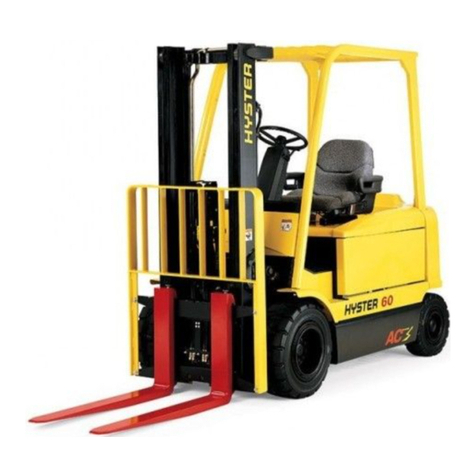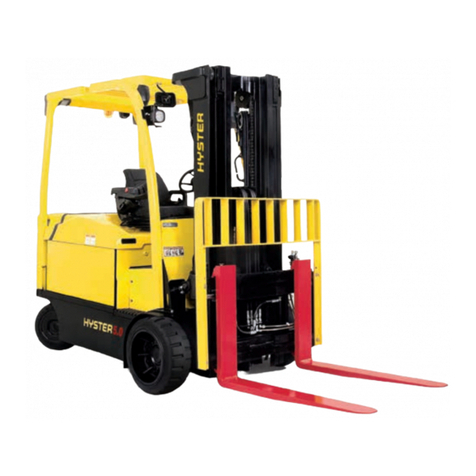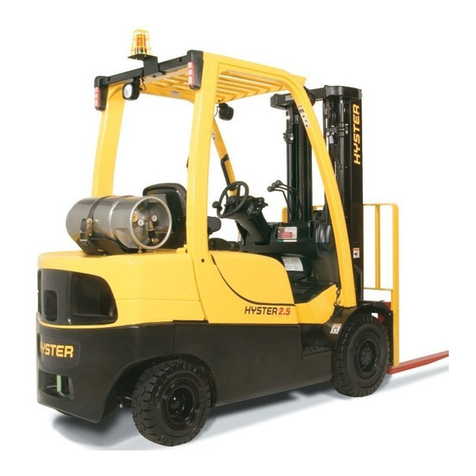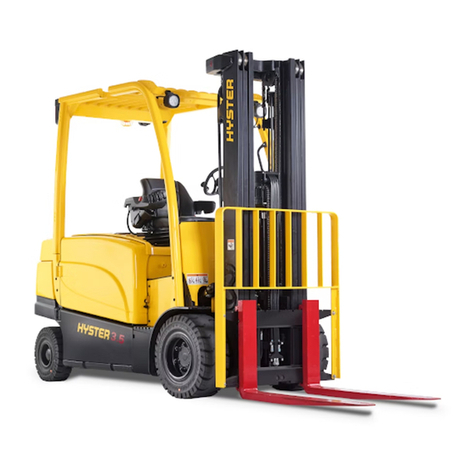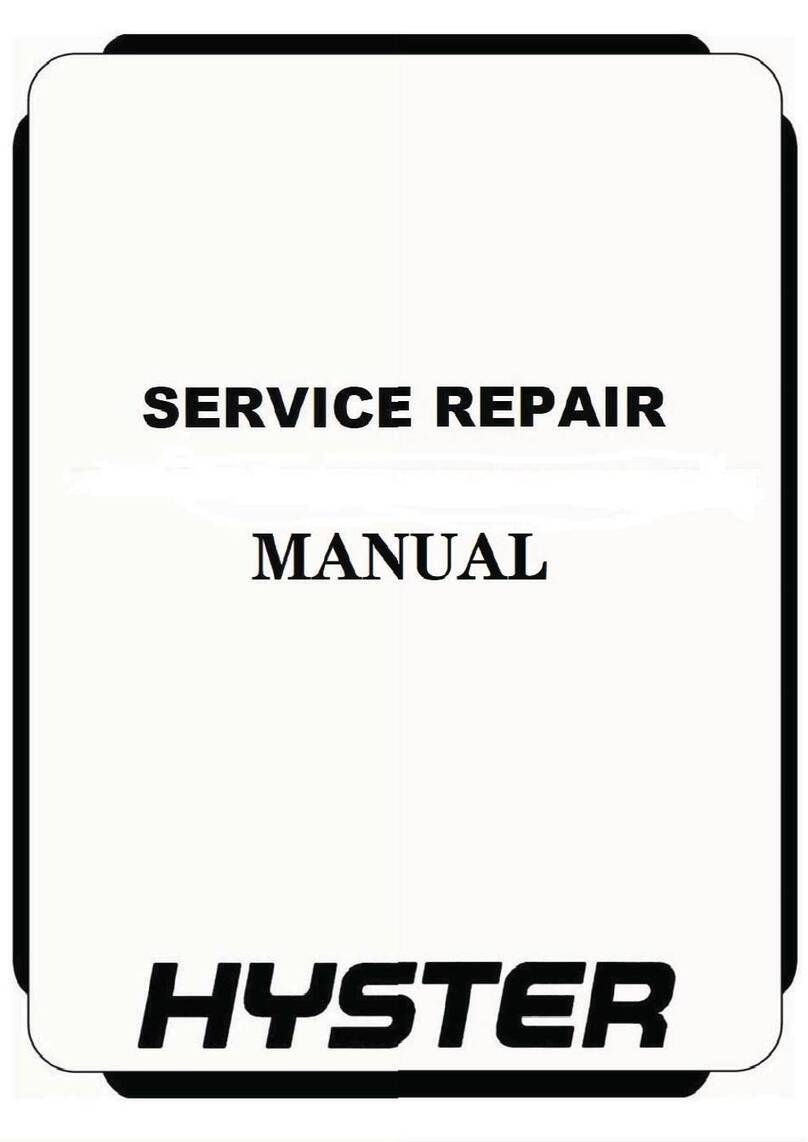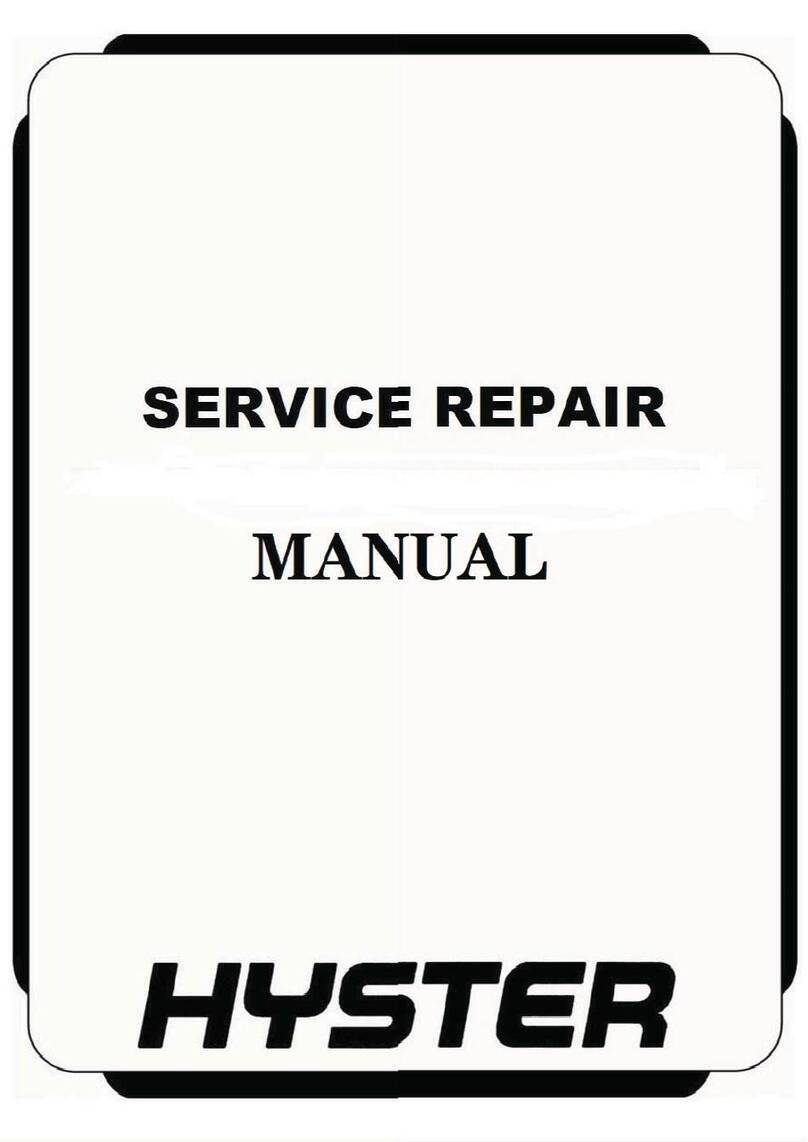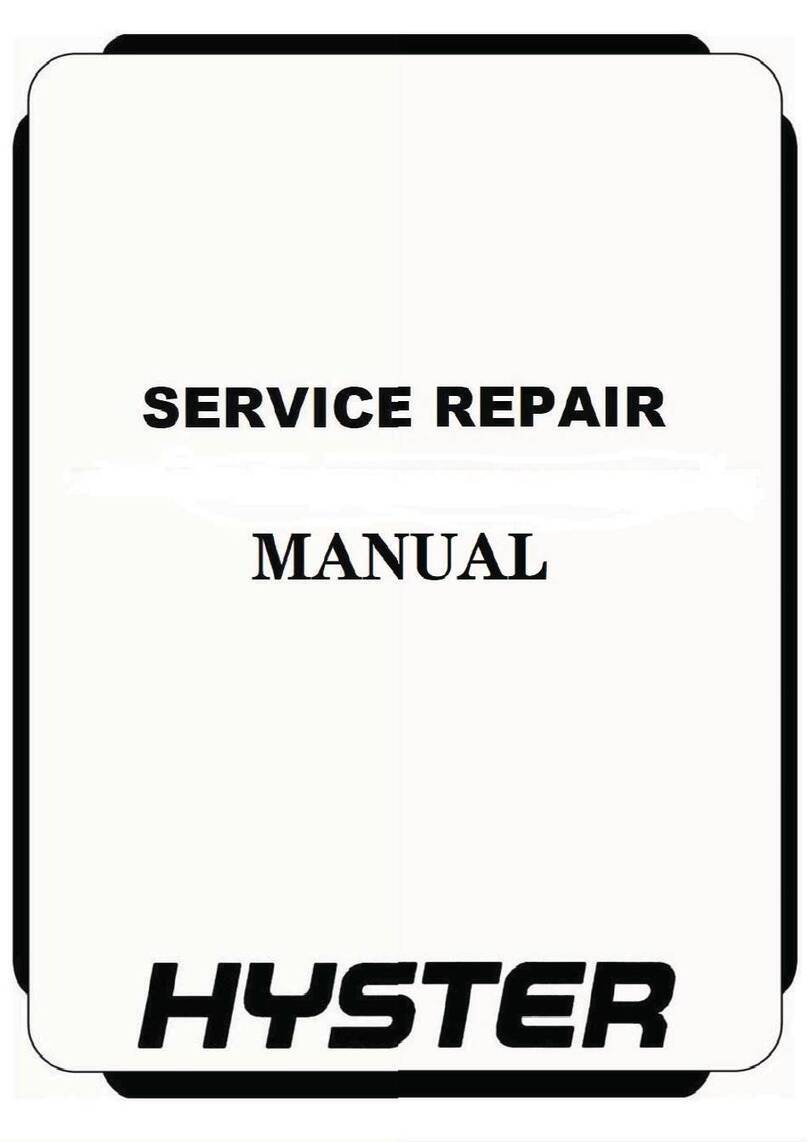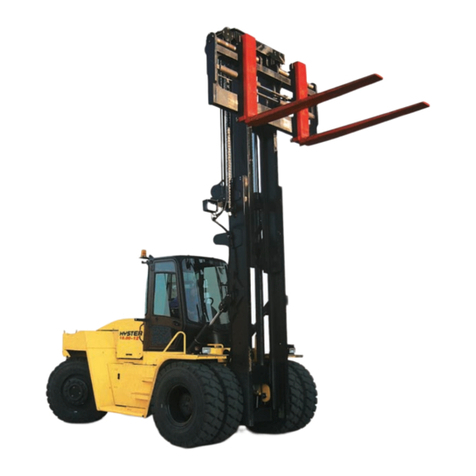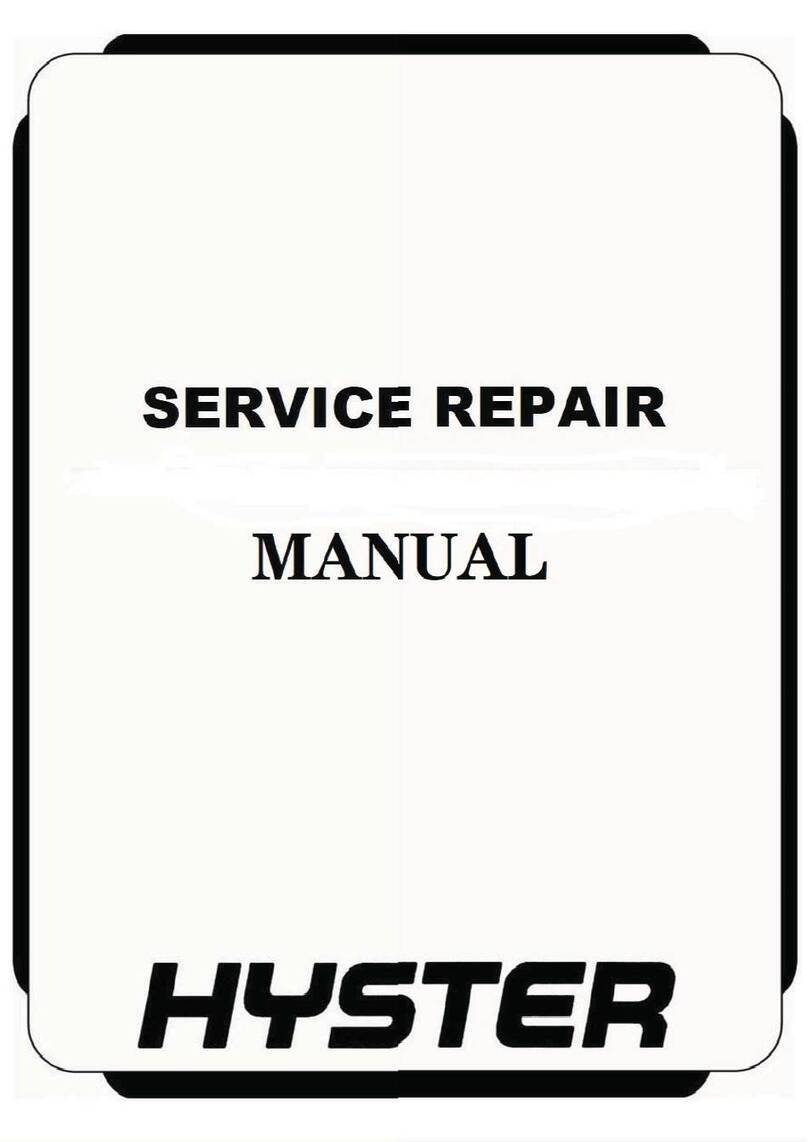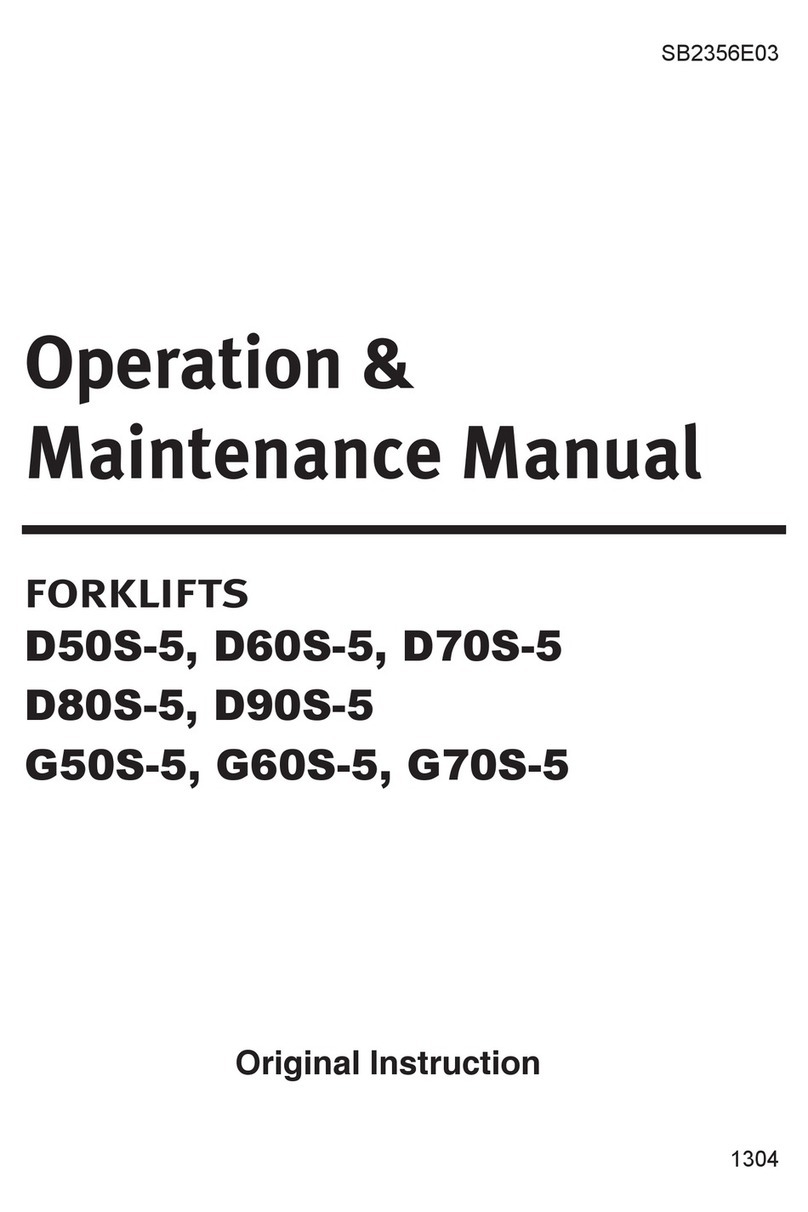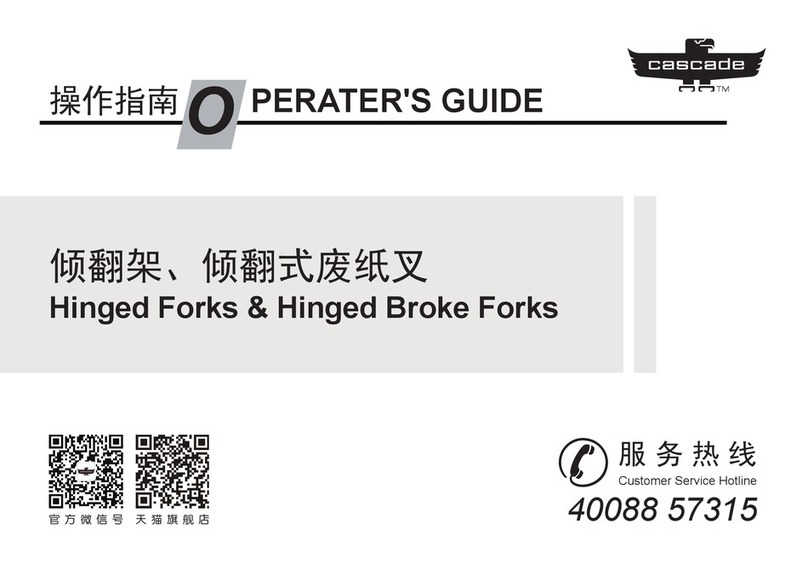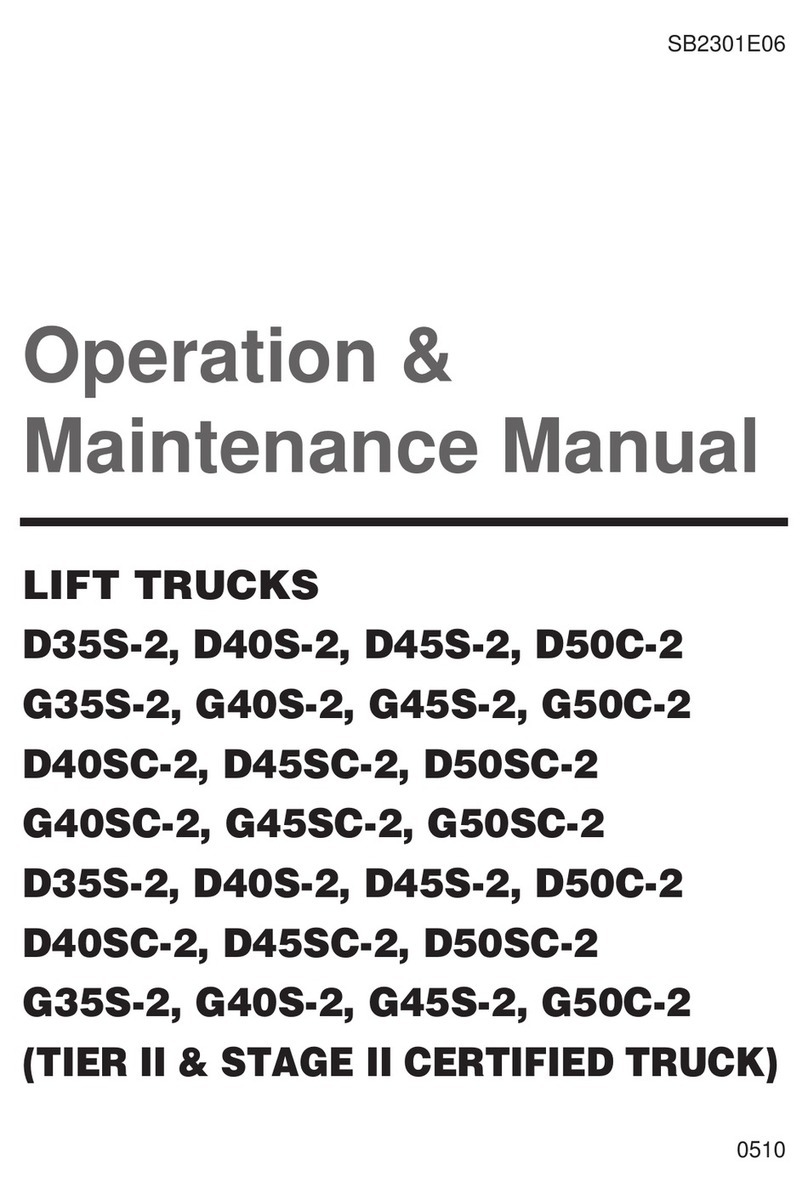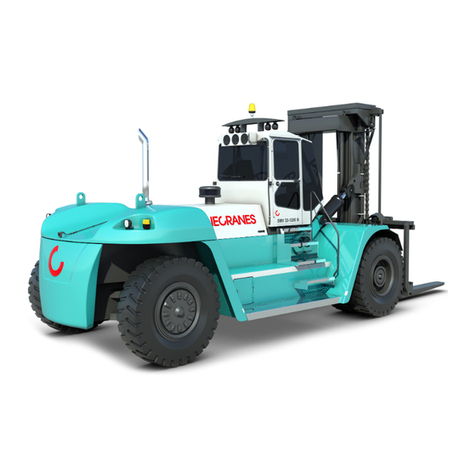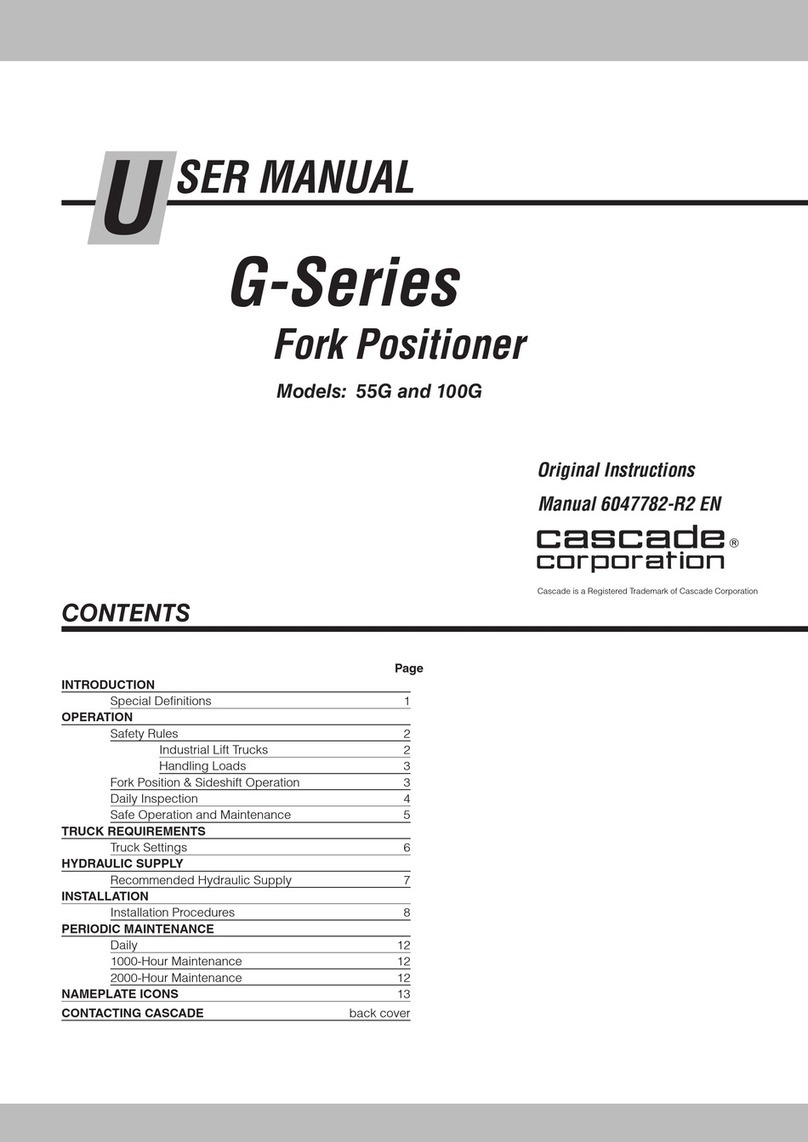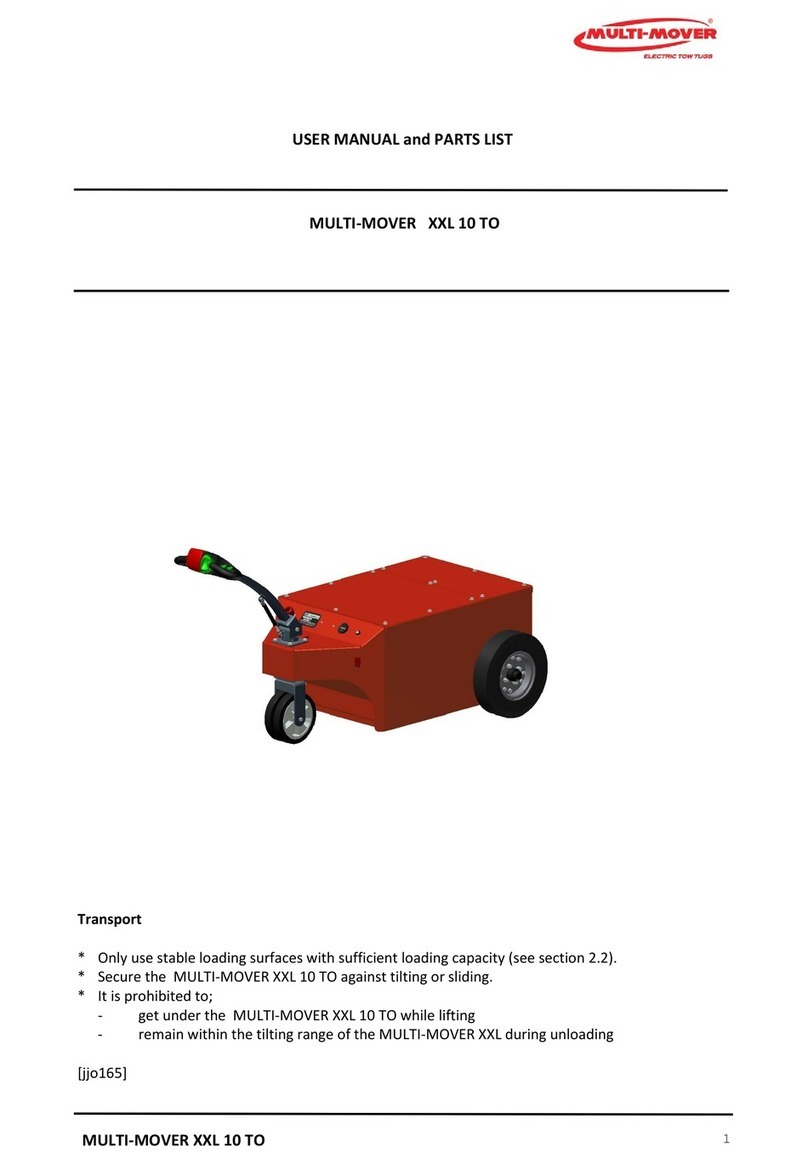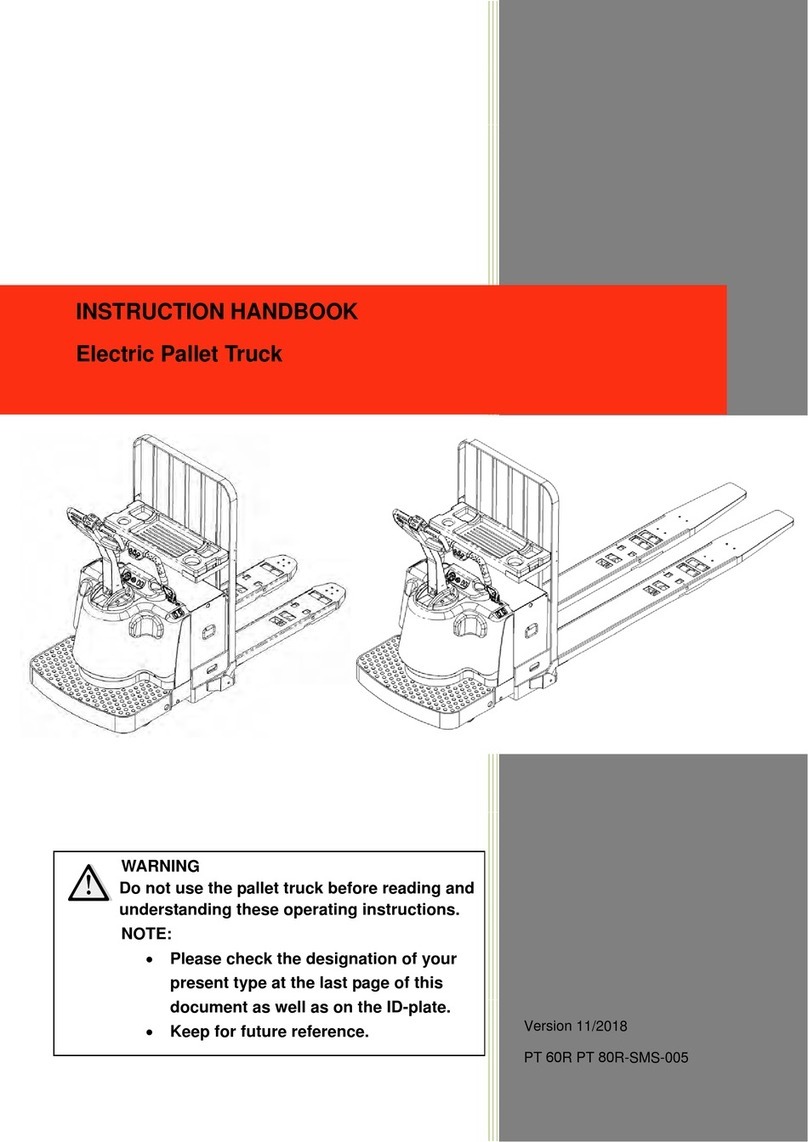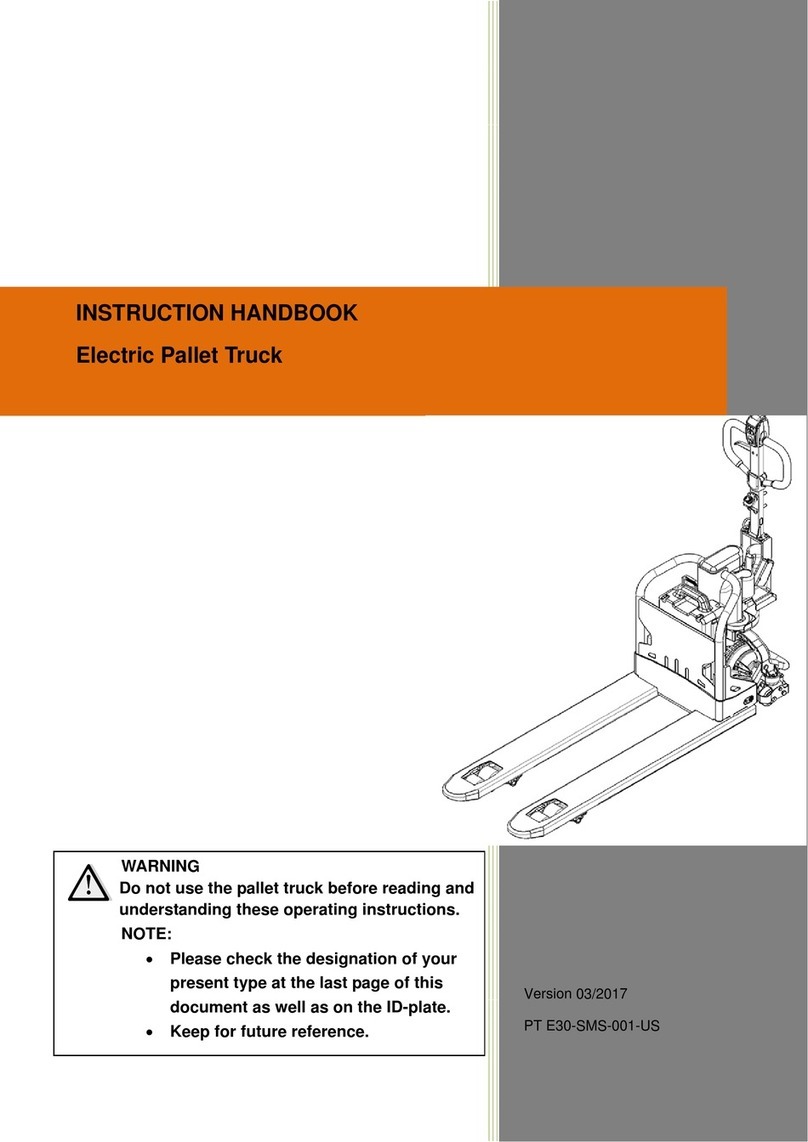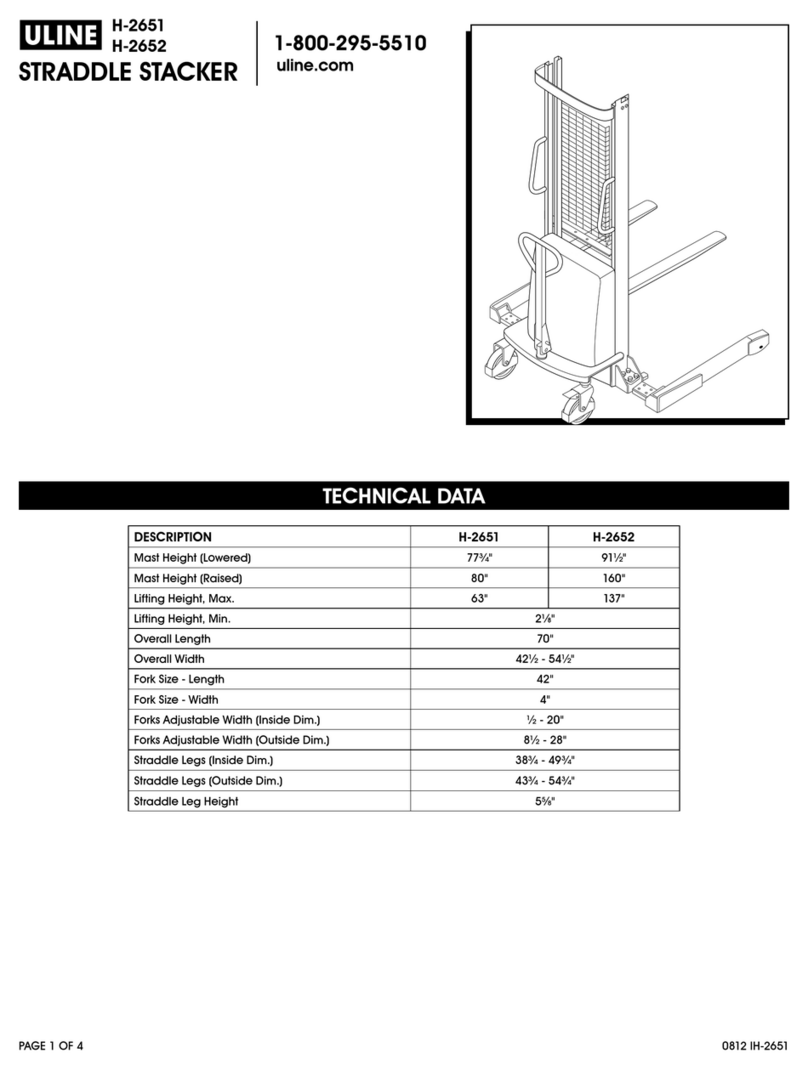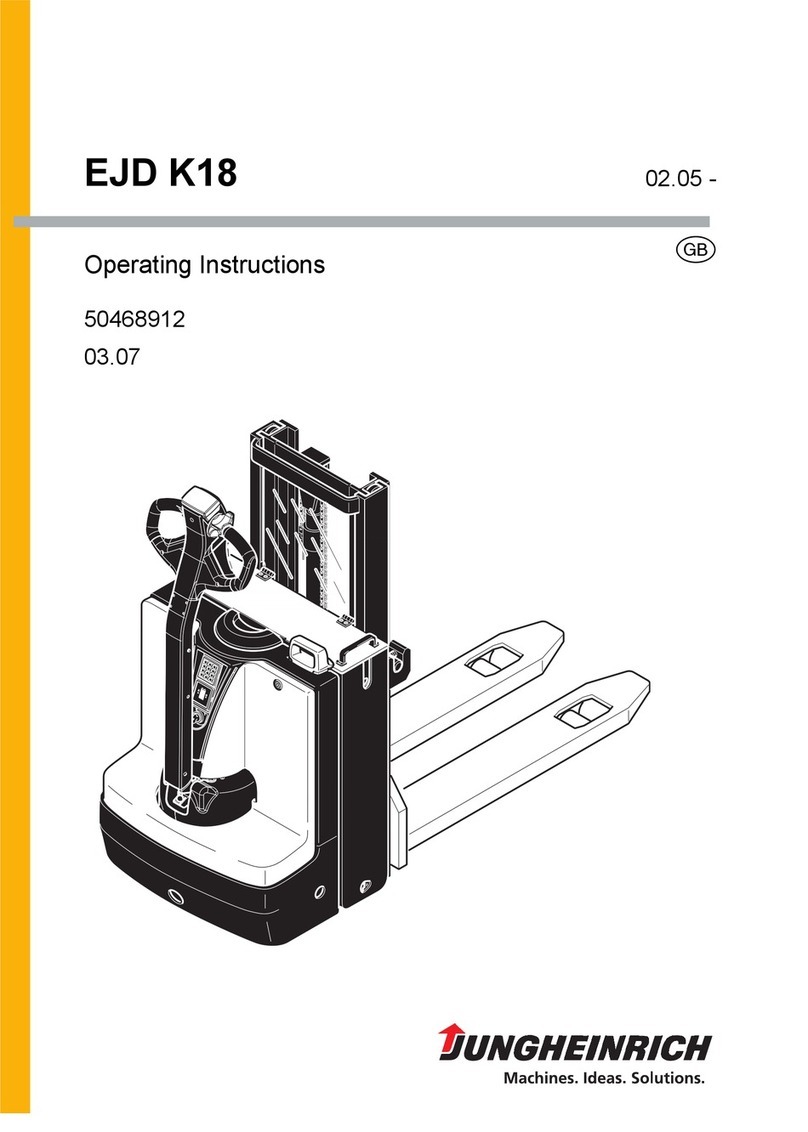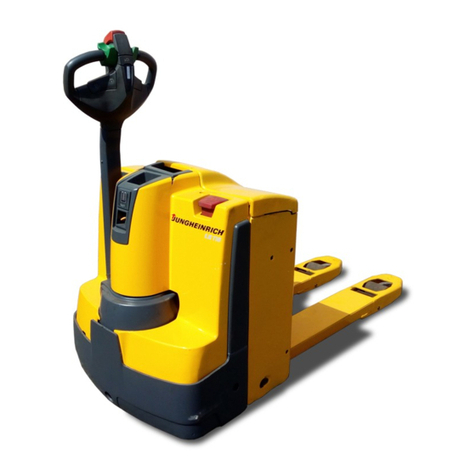
8000 SRM 970 General
General
This section contains a Maintenance Schedule and
the instructions for maintenance and inspection.
The Maintenance Schedule has time intervals for in-
spection, lubrication, and maintenance. The time
intervals are based on a normal operation. A nor-
mal operation is considered to be one 8-hour shift
per day in a relatively clean environment on an im-
proved surface. Multiple shifts, dirty operating con-
ditions, etc., will require a reduction in the recom-
mended time periods in the Maintenance Schedule.
WARNING
Do not make repairs or adjustments unless you
have both authorization and training. Repairs
and adjustments that are not correct can make
a dangerous operating condition.
Do not operate a lift truck that needs repairs.
Report the need for repairs to your supervisor
immediately. If repair is necessary, put a DO
NOT OPERATE tag on the control handle. Re-
move the key from the key switch.
Your lift truck dealer has the facilities and trained
personnel to do the maintenance. A complete pro-
gram of inspection, lubrication, and maintenance
will help your lift truck perform efficiently and oper-
ate over a longer period of time.
Some users have service personnel and facilities to do
the items listed in the Maintenance Schedule. Ser-
vice Manuals are available from your lift truck dealer
to help users who do their own maintenance.
Do not make repairs or adjustments unless specifi-
cally authorized to do so.
Put the lift truck on a level surface. Lower the car-
riage and forks, apply the parking brake, and turn
the key switch to OFF. Open the access panels and
inspect for leaks and conditions that are not normal.
Clean any oil spills. Make sure that lint, dust, paper,
and other materials are removed from the compart-
ments.
HOW TO MOVE DISABLED TRUCK
How to Tow Lift Truck
WARNING
Use extra care when moving a lift truck during
the following conditions:
• Brakes do not operate correctly.
• Steering does not operate correctly.
• Tires are damaged.
• Traction conditions are bad.
• The lift truck must be moved on a steep
grade.
If the steering pump motor does not operate,
steering control of the lift truck can be slow.
This can make the control of the lift truck dif-
ficult. If there is no electrical power, steering
can be difficult. Poor traction can cause the
disabled lift truck or towing vehicle to slide.
Steep grades will require additional brake
force to stop the lift truck.
Never carry a disabled lift truck unless the lift
truck MUST be moved and cannot be towed.
The lift truck used to carry the disabled lift
truck MUST have a rated capacity equal to
or greater than the weight of the disabled
lift truck. The capacity must be for a load
center equal to half the width of the disabled
lift truck. See the nameplate of the disabled
lift truck for the approximate total weight.
The forks must extend the full width of the
disabled lift truck. Center the weight of the
disabled lift truck on the forks and be careful
not to damage the under side of the lift truck.
1. The towed lift truck must have an operator.
2. Tow the lift truck slowly.
3. Raise the carriage and forks approximately
30 cm (12 in.) from the surface.
4. If a counterbalanced lift truck is used to tow the
disabled lift truck, that lift truck must have an
equal or larger capacity than the disabled lift
truck. Install an approximate half-capacity load
on the forks of the lift truck that is being used
to tow the disabled lift truck. This half-capacity
load will increase the traction of the lift truck.
Keep the load as low as possible. Do not attempt
to tow a reach truck with another reach truck.
1

